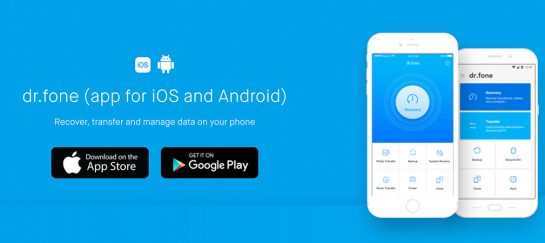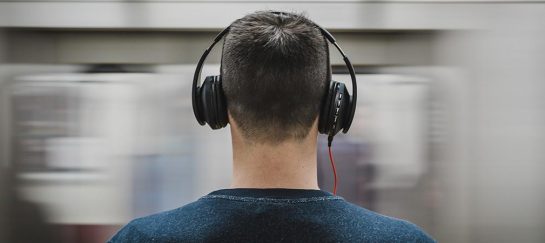The Dynamics of Tech Advancements in Container Tracking: A Guide
You’ve probably encountered the myriad challenges of keeping tabs on shipping containers. Misplaced containers, delayed shipments, or even losses? Sound familiar? Well, you’re not alone. Thankfully, with the rapid tech advancements, container tracking has become more efficient and accurate than ever. In the following sections, this blog post will explore how these advancements are revolutionizing the world of container tracking, and how you can tap into this potential.
AI-powered Solutions
AI-powered solutions are playing a pivotal role in transforming container tracking. At the heart of these advancements is the capacity of AI to process vast quantities of data quickly and accurately. Effective ocean container tracking with artificial intelligence works by utilizing machine learning algorithms, where the system can predict container arrival times with increased precision, improving scheduling and reducing idle time at ports. Furthermore, AI can analyze patterns in data, identifying potential issues like route inefficiencies or recurring delays, enabling proactive problem-solving.
Another key application is the use of AI in automated identification systems (AIS), enhancing the ability to track containers in real-time. This not only improves visibility and control over shipments but also facilitates better coordination in rerouting or emergency situations. As such, AI-driven solutions are mitigating traditional challenges in container tracking, fostering greater efficiency, accuracy, and predictability in the logistics field.
Internet of Things
The Internet of Things (IoT) is another key player in the evolution of container tracking. These gadgets, such as GPS devices and sensors, are attached to containers, enabling real-time monitoring of their location, condition, and status. This allows for constant visibility and the possibility of immediate action in case of any discrepancies, damage, or theft. The devices can also monitor environmental conditions inside the container, including temperature, humidity, and light exposure, ensuring the integrity of sensitive cargo like food or pharmaceuticals.
Also, IoT facilitates predictive analytics. By analyzing historical data, potential delays or issues can be predicted and avoided, increasing efficiency in logistics operations. By marrying real-time tracking with predictive analytics, IoT is not only helping address the traditional challenges in container tracking but also enabling a proactive, data-driven approach to logistics management.
Predictive Analysis
When working in an industry that’s full of risks and uncertainties, you need to be prepared for every possibility. Here are some things that predictions can help you with when it comes to container tracking:
- Route optimization
- Arrival time prediction
- Equipment maintenance forecasting
- Container utilization optimization
- Risk assessment and security
- Supply chain disruption prediction
- Weather impact analysis
- Demand forecasting
- Fuel consumption optimization
- Custom clearance time prediction
By analyzing historical data and patterns, it anticipates future events, enhancing operational efficiency and reducing uncertainties. Predictions allow for optimal route planning, accurate arrival time estimates, and efficient container use. They also aid in assessing potential risks, predicting supply chain disruptions, and analyzing the impact of weather.
Moreover, predictive maintenance minimizes equipment downtime, while demand forecasting and fuel consumption optimization contribute to cost-effectiveness. Predictive analysis also helps estimate custom clearance times, reducing delays. In essence, predictive analysis transforms reactive decision-making into a proactive, data-driven approach, fostering a smarter, more efficient logistics industry.
Telematics Systems
Through the integration of GPS, onboard diagnostics, and telecommunication systems, they offer a comprehensive overview of the container’s journey. This includes its current position, speed, direction, and even the condition of the cargo. Telematics systems are particularly effective in detecting and addressing delays, deviations, or issues such as damage or theft, allowing for immediate corrective measures.
They also support geofencing, which triggers alerts when the container strays from its intended route. Additionally, with advanced analytics, telematics systems can predict potential issues, enabling timely preventive actions. Therefore, through real-time tracking, proactive monitoring, and predictive analytics, telematics systems are significantly enhancing the efficiency, accuracy, and security of container tracking.
Blockchain Tech
Blockchain technology offers a decentralized and secure platform where all transactions and information related to a container’s journey can be recorded and verified. This ensures transparency and traceability, as any stakeholder within the supply chain can track the container in real-time, access its transit history, and verify transactions or events. Furthermore, blockchain enhances security and minimizes fraud, as once data is entered into the blockchain, it is immutable and cannot be altered without consensus. This makes it an effective tool for documenting and verifying the chain of custody.
Additionally, blockchain can streamline administrative processes by automating tasks such as billing, settlements, and customs clearance through smart contracts. These contracts automatically execute transactions upon meeting predefined conditions, reducing paperwork and processing time. Thus, blockchain is revolutionizing container tracking by enhancing transparency, security, efficiency, and automation.
Cloud Computing
Cloud computing has emerged as a transformative force in container tracking, providing a robust platform for data storage, processing, and sharing. It enables instantaneous access to real-time tracking information from any location, enhancing visibility and control over shipments. Furthermore, cloud-based platforms facilitate the seamless integration of various tracking technologies, such as IoT, AI, or telematics, creating an interconnected ecosystem for comprehensive monitoring.
Through cloud computing, vast amounts of tracking data can be processed and analyzed swiftly, leading to valuable insights for optimization and problem-solving. Additionally, cloud computing offers scalability, accommodating growing data needs without substantial infrastructure investment. Thus, cloud computing is significantly enhancing the efficiency, accuracy, and flexibility of container tracking, driving a paradigm shift in logistics management.
Mobile Applications
Mobile applications are a powerful tool in container tracking, offering real-time, on-the-go access to critical tracking information. Such apps amalgamate data from IoT devices, AI systems, telematics, and cloud platforms, providing a comprehensive overview of a container’s status and location. Users can receive instant alerts on their smartphones about delays, route deviations, or potential issues, enabling rapid response.
They can also track the environmental conditions within the containers, reducing the risk of cargo damage. Moreover, these applications support features like barcode and QR code scanning for easy identification and record-keeping. In sum, mobile applications are enhancing convenience, transparency, and immediacy in container tracking, making it a more user-friendly and efficient process.
In conclusion, technology has become your invaluable ally in container tracking. With advancements in AI, IoT, predictive analytics, telematics, blockchain, cloud computing, and mobile applications, you can now track and manage your containers more accurately, efficiently, and securely. Explore these technologies and revolutionize your logistics operation, ensuring your goods always reach their destination on time and in perfect condition.
Daily Newsletter
Subscribe to Jebiga for a dose of the best in gear, design, rides, tech and adventure.






